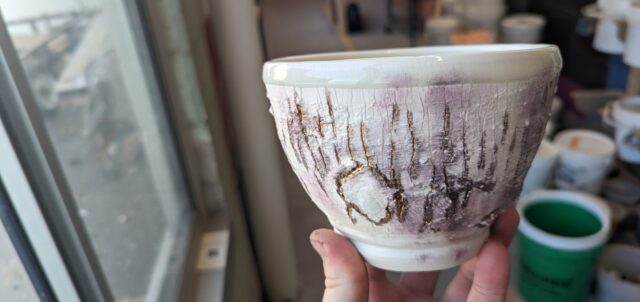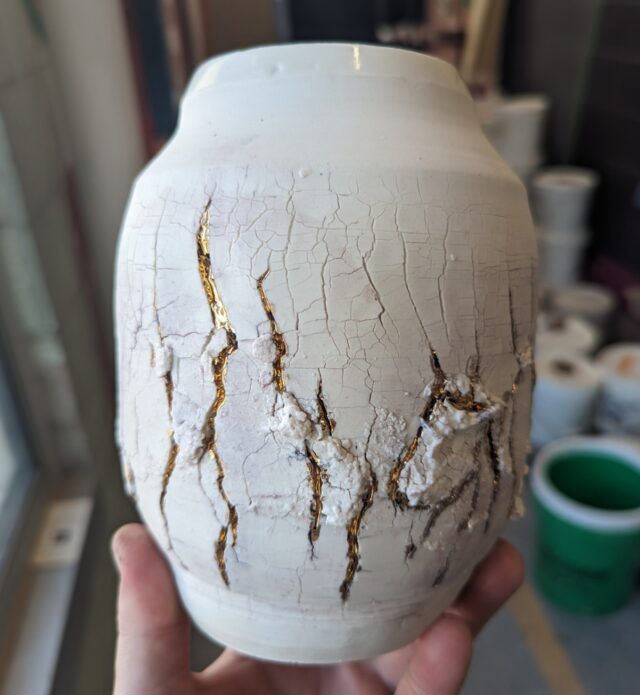Hello Makers!


Ever wondered how pottery artists create those stunning, metallic gold accents on their pieces? The secret lies in a wonderful material known as gold luster. Today, we’re diving into the world of gold luster – what it is, how it’s used, and some key things you need to know before you start experimenting with it in your own pottery projects.
What is Gold Luster?
Gold luster is an overglaze – a decorative element applied to pottery after it’s been bisque fired and glaze fired. Its primary ingredient is gold, making up about 10-20% of the mixture. The rest is a blend of fluxes and oils. Fluxes help the gold adhere to the ceramic surface, while the oils assist in the application process.
Application and Firing
Gold luster is usually brushed onto the pottery piece, allowing you to highlight specific areas with that luxurious gold finish. Once applied, the piece goes back into the kiln for what’s known as a luster or overglaze firing. This firing is at a much lower temperature than the previous firings – around 018-020 in the Orton Cone rating system (approximately 1315-1377°F or 715-747°C).
Safety and Practicality
Before you get started, there are a few safety and practical considerations to keep in mind. Gold lusters often contain materials that can be harmful if not handled properly. Always work in a well-ventilated area when applying gold luster, and make sure to clean up thoroughly afterwards.
Additionally, while the finished product can be stunning, gold luster surfaces may not be food-safe. If you’re creating functional ware, it’s advisable to avoid placing luster on surfaces that will come into contact with food.
The Cost of Beauty
One more thing to bear in mind is that gold luster is a luxury item in the pottery world. The gold content makes it quite expensive, and it should be used sparingly. However, the impact it creates can be worth the cost – a little goes a long way in adding that extra sparkle to your ceramics.